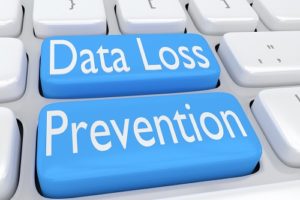CYBERATTACK – BEYOND THE HEADLINES!
When there’s an attack – cyber or otherwise – there are headlines. Satellite and cable news channels come alive, stirring everyone’s imagination. How did it happen? Who dunnit? What should we do now?
 How long a cyberattack remains a headline depends on the next major story that breaks. That’s just the nature of things. An attack happens, followed by headlines and hoopla, then most everyone moves on.
How long a cyberattack remains a headline depends on the next major story that breaks. That’s just the nature of things. An attack happens, followed by headlines and hoopla, then most everyone moves on.
Unless, the attack happens to you.
No One Is Exempt
Former U.S. President Ronald Reagan once said that “Recession is when your neighbor loses his job. Depression is when you lost yours.” We might paraphrase that as “A cyberattack is when you neighbor’s computer is hacked. A disaster is when yours is.” It’s a disaster we all want to avoid.
Every computer device, personal or business, is at risk. What, or whom, is attacked is up to the attacker. We may not even know the reason. One thing we know is that the questions the new commentators are asking are no longer important to us when we have been attacked.
We want to know how this happened and what we can do to prevent it from happening again. And, oh yes, how much damage has been done, and do I still have any money in my bank account? The attack is not a headline that slips silently into oblivion. It can be a disaster felt in FEMA-like magnitude as one wonders what has happened to personally identifiably information (PII) and personal health information (PHI) or, in the case of businesses, intellectual property (IP).
Triage and Recovery
According to a recent report from Deloitte, recovery from a typical cyberattack could take years. All the initial stir in the wake of an attack is simply triage. The efforts to stop attacks in progress, assess damages, and implement remedial action may take days or weeks. But, time is not the only issue. The Deloitte study reveals those early triage activities address less than 10 percent of the actual total impact. The therapy (impact management) and recover process may take years.
Think of it like having a heart attack. The EMTs (Notice that the “T” stands for “technicians”) arrive on the scene quickly to check vital signs and stabilize the injured. Then it’s off to the Emergency Room and, sometimes, Intensive Care. Then…well, you know the rest. Recovery is usually a long road with a low speed limit, with a big medical bill at the end. During the cyberattack recovery process, infrastructure must be repaired, relationships may need to be addressed, and systems may need to be redesigned – all with a big bill at the end.
An Ounce of Prevention
There’s an old adage that parents used to tell their children to teach them to brush their teeth. “They’re just your teeth. Ignore them and they’ll go away.”
Cyberattacks are not like your teeth. They will not go away if you ignore them. Being aware is only the beginning. You must also be prepared.
With technology advancing at an historically unparalleled pace, no individual can keep up with the increasingly stealthy attacks of the nefarious minions who may seek nothing more than to disrupt some anonymous person’s life or business.
The only reasonable remedy that can provably prevent penetrations and intrusions is by using Managed Security Service Providers (MSSP). We are the guys in the white hats. As your partners in the battle against cybercrime, we defend and protect your systems and your information with round-the-clock, automated monitoring. We spot existing and potential threats and stop them before they cause extensive damage and expense.
Contact Tech Sentries today to learn more. You can reach us at 843-282-2222!





 Keeping others from being able to see the content on your computer is your right. No justification is needed—only appropriate action. In today’s political climate, computer security is one of the most common questions we are asked here at Tech Sentries. These questions often deal with protecting your data, keeping the government out of your affairs, and even encryption. If you don’t know what encryption means, much less how it’s used, this article is for you!
Keeping others from being able to see the content on your computer is your right. No justification is needed—only appropriate action. In today’s political climate, computer security is one of the most common questions we are asked here at Tech Sentries. These questions often deal with protecting your data, keeping the government out of your affairs, and even encryption. If you don’t know what encryption means, much less how it’s used, this article is for you!

 Knowledge is power only if we use it. Now that we are aware that the greatest weakness in our systems appears to be the users, how we respond to that knowledge is key to
Knowledge is power only if we use it. Now that we are aware that the greatest weakness in our systems appears to be the users, how we respond to that knowledge is key to